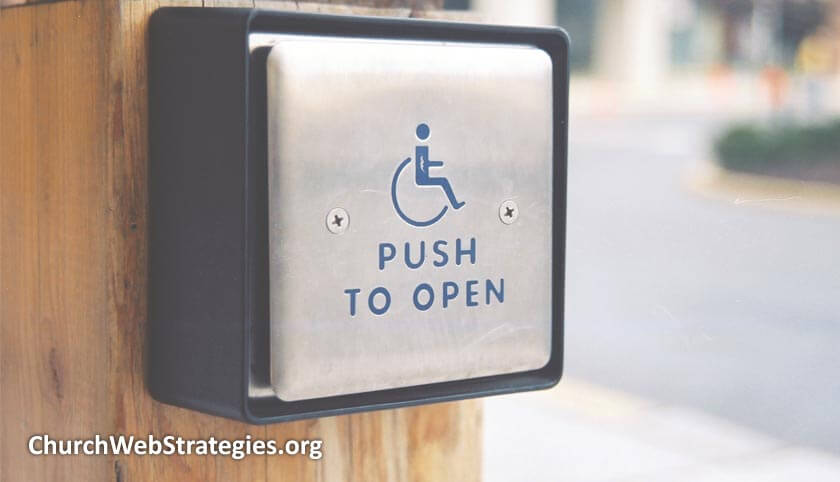What good is a website if your audience cannot use it? A well designed website does not simply mean that it is aesthetically pleasing, easy to navigate, or can be viewed on a mobile device. It also means that your users can access the information despite any restrictions they may have. This article will delve into some of the common disabilities your users may have, and the barriers you can remove for them.
Odds are that at least one person in your congregation suffers from some sort of physical disability. If not, just wait a few years until you congregation begins to age. A multitude of barriers to using a computer as we age, including our ability to see and interact with them. Below I will explore these two problems and how you can help solve them on your church website.
Visual Impairments
This is probably the most obvious disability that people consider when thinking of what can prevent you from easily using a computer. So much feedback is provided through the visual display of items on screens. We spend large chunks of time and money on creating a visually pleasing website. What would your website “look” like to a visually impaired person? More importantly, what steps can I take to make my site friendlier to this segment of the population?
Visual Treatment
Certain visual treatments can not only enhance how your pages look, but also make it easier to read. This does not always just mean larger font sizes. Use of contrasting colors and white space around elements allow eyes to more easily focus. Sites with simpler and less cluttered designs will not only look nice, but they will help those users with degenerative vision conditions to more easily consume your content.
Semantics
Not only does logically structured HTML code enhance your SEO rankings, it makes it easier for those who use screen reading software. By using proper headings, you can allow users to skip to parts of your content with greater ease. This is true for users with perfect sight that are visually scanning the content for an area they are interested in, as well as screen readers that are assisting a blind user.
Cognitive Impairments
Think about how your body interacts with a computer. Now consider the number of people in your church with arthritis, Parkinson’s Disease, Cerebral Palsy, or any other host of cognitive impairments. Using a mouse may be nearly impossible for these users, let alone trackballs or touchpads. While better touchscreen interfaces are evolving with the advent of tablet devices, this is still a large obstacle for their using your website. Below are a two areas you should explore:
Button Size
Many designers prefer to call attention to a page element with additional white space and contrasting colors. However, size will help someone with a cognitive disability more easily click on an element. Do not leave your users frustrated because they do not have the fine motor skills to move to the next step.
Spatial Proximity
Although you will want to maintain consistency with your templates and patterns, try to place a primary call to action as close to the estimated location of the mouse or pointer. If they used a primary navigation to get to a page, chances are their hand or mouse will be closer to the top of the page. So do not make put a Cerebral Palsy Support Group newsletter signup button at the bottom of the page. Make their painful path as short as possible whenever the opportunity arises.
Action Item
Someone with a new disability may be desperately searching for answers and has turned to the church. Giving them a frustrating experience is not the ideal move. Show them you care by taking the time to examine your current or potential website. Make improvements where possible and open a door to this group of people.
Photo courtesy of Ben C.

